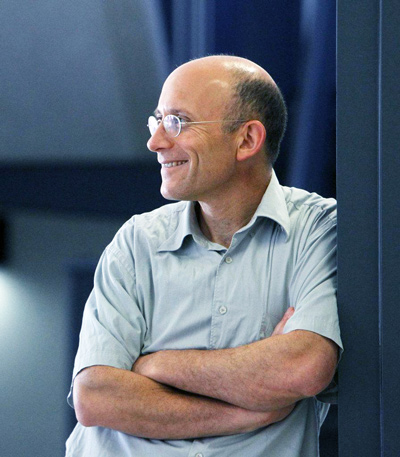

Israeli researchers hope to use artificial intelligence to map clusters of the new coronavirus in order to aid government efforts to curb the spread of the disease. To that end, scientists at the Weizmann Institute of Science in Rehovot and the Hebrew University of Jerusalem are collecting information about symptoms from interested members of the public.
The scientists leading the new project hope that after they gather sufficient data to prove its efficacy, the Health Ministry will add it to the growing number of tools that are being employed to address this unprecedented public health crisis.

Prof. Eran Segal, a computer science expert at the Weizmann Institute, is leading the project along with Prof. Benny Geiger from Weizmann and Prof. Yuval Dor from the Hebrew University. Segal explains that the experience gained from studying previous epidemics, as well as the knowledge already acquired about the way the COVID-19 spreads, shows that the virus spreads through clusters of infection, and that early identification of such clusters can help stop the virus from spreading or at least slow it considerably.

“One possibility, which they used in South Korea, is to use a huge number of tests to identify these clusters,” Segal says, noted that in that country more than 10,000 people are tested for the virus daily.
“At this stage, Israel can’t do such intensive testing. That’s why we sought an alternative tool.” The solution they found was to ask members of the public to fill out online daily questionnaires (which take less than two minutes to complete), that include details about various symptoms and place of residence (street and zip code).
The information collected, Segal explains, will be analyzed using machine learning algorithms that will give the researchers – and the Health Ministry – a variety of information. If information is collected from a large enough population, the tool will first of all be able to give up-to-date assessment of the spread of the illness. After identifying at least one cluster, the algorithms will be able to identify patterns that will enable the identification of additional clusters, even before more-serious symptoms of the disease appear. This will allow the testing to be focused on potential eruption points and halt the spread of the disease at an early stage.
Segal also said the AI tool would be able to check the effectiveness of the various steps that have been taken to halt the spread of the virus, such as closing schools and limiting passenger numbers of public transportation, or steps that might be taken in the future.
The hope is that with enough data, restrictions could be targeted both more accurately and more narrowly, making it possible to ease restrictions in areas that are of low risk for developing clusters of infection. “It could identify where to intensify the measures, and where they can be eased,” Segal says.
He added that for now the information is being collected via Google Docs. No personal information (other than location, as noted above), is being collected. “We thought about the project yesterday morning and 24 hours later it was online,” Segal says. He added that the team consulted with a large number of researchers and physicians while building the project, and that senior Health Ministry officials helped them draw up the questionnaire.
“This is a pilot project,” he said. “We hope that after we can determine its effectiveness, the Health Ministry will officially adopt it, including a dedicated app for collecting the information. For this to happen, we need as many people as possible to fill out the questionnaire.”